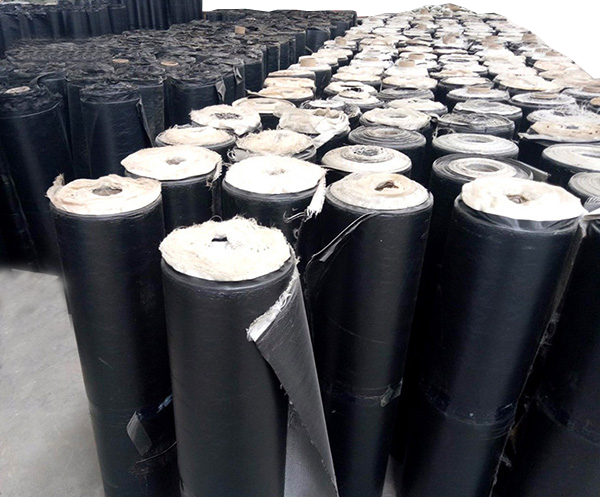Construction technology of SBS and APP waterproof membrane
[Summary description] 1. Technological process: clean the base layer → apply primer oil → additional layer → lay the coiled material → detail treatment → heat-melt edge sealing → protective layer.
1. Process flow:
Clean the base layer → apply the base oil → additional layer → lay the coiled material → detail treatment → heat-melt edge sealing → protective layer.
2. Clean up base:
2.1 First clean up the dust and sundries, the remaining mortar blocks on the surface, the protruding parts, and the hardened glue.
2.2 Before laying the roof waterproof layer, the surface of the base layer must be kept clean and dry, with a moisture content of not more than 9%. The dryness test method can be to spread 1㎡ of coiled material on the leveling layer and open it for inspection after standing for 3 to 4 hours. It can be constructed if there is no watermark on the leveling layer covering part and the coiled material.
3. Brush the base treatment agent:
Brush the base treatment agent on the dry base, first use a brush to clean the nodes, surroundings, inner corners and other parts, and determine the brushing time in advance according to the drying time of the base treatment agent and the speed of construction. The brushing should be even and one coat Well, it’s better to dry until it doesn’t stick to your feet. Make it thin and uniform, with consistent thickness, no pitting, air bubbles, blanks or bottoms, and no sticky feet. the
4. Coil laying:
4.1 According to the width of the selected coil, leave the size of the lap seam, and stretch the thread at the position of the reference line of the rolled material, so that it can be laid according to this reference line.
4.2 When the roof slope is ≤3%, the coiled material should be laid parallel to the roof ridge; when the slope is between 3% and 15%, it can be laid parallel or perpendicular to the roof ridge; when the slope is ≥15%, it should be perpendicular to the roof Roof paving; the upper and lower coils shall not be laid vertically, and the lap joints of two adjacent coils shall be staggered by more than 1/3 of the width.
4.3 Hot-melt paving coil: cut the modified asphalt waterproof coil according to the length of paving and roll it up for use. Facing the film face down, align the seams in the long and short directions, open the unfolded part, use a gasoline blowtorch or a special flame spray gun to heat the joint between the base layer and the coil, keep a proper distance between the spray gun head and the coil, and keep the distance between the nozzle and the coil The distance between the surface is about 300mm; it is at an angle of 30~45° to the base layer, spray and bake back and forth. It is observed that when the asphalt of the coil has just melted, the hot melt adhesive layer appears black luster, shiny to slightly microbubbles, and moves forward. Slowly roll and lay, and then compact with an exhaust roller to make the coil and the base layer bond firmly.
4.4 Lap seam construction: when laying a single layer, the lap width of the long side is not less than 100mm, and the width of the lap joint of the short side is not less than 150mm; 100mm; the maximum allowable deviation of the lap width is ±10mm, and the paving coil must not wrinkle or stretch the coil forcibly.
4.5 The seams should be sealed tightly with sealing materials, the width of which is ≥10mm.
4.6 The coiled material after paving should be flat and straight, and the height of the waterproof layer should not be less than 250mm. The thermal fusion method is adopted between the coiled materials on the same layer, and the weld seam should be smooth and not twisted.
4.7 The intersection of yin and yang corners, wall bushings, gutters, water outlets, end closures, and other joints must be carefully paved, adhered to, compacted, and end securely. If necessary, an additional reinforcement layer should be laid to meet the requirements. Relevant regulations such as design requirements and waterproof engineering technical specifications.
5. Construction of protective layer:
After the construction of the waterproof layer is completed, if it passes the acceptance, use cement mortar or fine stone concrete as the protective layer.



